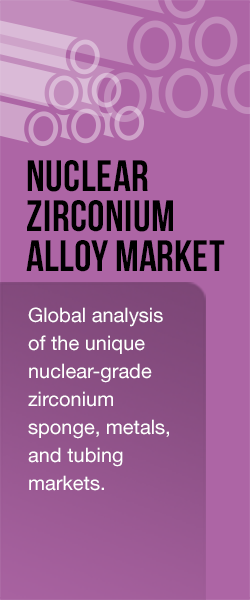The Humongous Leap: From Arms Negotiations to U Supply
This past Monday there was an article in The New York Times that suggested Strategic Arms Reduction Treaty (START) negotiations by the U.S. and Russia could lead to a follow-up to the current HEU deal, labeling this “HEU-2.” We received calls and emails on it, in part because the article quoted UxC President Jeff Combs, but also because this type of message was much different than what the industry is expecting with respect to an unlikely follow-up to the current HEU deal. Because of this, we thought that we would use this space to set the record straight.
The way the article was written makes it appear that more HEU supplies are likely to enter the market after the current HEU deal is completed. It states “(a)n American diplomat and an official with the a federal nuclear agency in Washington have confirmed, separately, that the two countries are quietly negotiating another agreement to continue diluting Russia’s highly enriched uranium after the expiration of Megatons to Megawatts, using some or all of the material from warheads likely to be taken out of the arsenals.” It precedes this statement by discussing how much the current HEU deal has contributed to uranium supplies and how the market would welcome future supplies. The impression given was that these negotiations could result in additional supplies to the market following the expiration of the current HEU deal. The Times article also characterizes U.S. utilities being “nervous about a supply gap,” and thus “are paying as much attention to President Obama’s efforts to conclude a new arms treaty as the Nobel Peace Prize committee did.”
The research that we have conducted suggests that there is no HEU-2 deal in the offing. What is being discussed by the U.S. and Russia is a reduction in deployed weapons, not weapons destruction or a follow-on HEU deal. It is a long way to go from negotiations about reducing the deployment of nuclear weapons to making the material contained in the weapons available to the market. In fact, it is a “humongous leap,” according to Dr. Thomas Neff, who is generally credited as being the father of the HEU deal and certainly a foremost expert in this area.
There clearly exists some confusion created by linking disarmament initiatives and HEU-derived supplies being made available to the market, and in this regard there is a tendency on the part of some to make this humongous leap anytime there is a new disarmament initiative. However, not all nuclear weapons taken out of deployment are destroyed (dismantled). Also, even if weapons are dismantled and the contained HEU is blended down, it is not axiomatic that the blended-down HEU will enter the market. Under one scenario, HEU can be blended down to just below 20w/o, which meets nonproliferation objectives (material is no longer considered HEU when its enrichment is below 20w/o), but is still far too high to be used in commercial reactors.
History will likely view the current HEU deal as a unique occurrence, where nonproliferation and commercial interests came together. The deal was struck when Russia was in dire economic straits and needed the money that sale of the LEU down-blended from HEU provided in a market that was otherwise largely closed to it. Today the economic situation in Russia is much different and Russia’s access to the market, while still constrained, is much better than before.
This is not to say that there will never be another HEU deal that brings supplies to the market; we never know what governments will do in the future. However, given the great difficulty in achieving the original HEU deal and the fact that Russian officials have stated that there are no plans for a second deal, it is illogical to assume that just because governments are entering into arms negotiations that more HEU will be made available to the market.
We also question the Times assertion that U.S. utilities are nervous about a supply gap, and find it hard to believe that they are watching the arms control negotiations intently, if at all. Our comment to the Times was that if there were a continuation of the HEU deal, utilities likely would be more interested in the uranium (as opposed to the enrichment) contained in the HEU, and that the uranium in the current deal is equivalent to two large uranium mines. It is our belief (we can’t speak for utilities) that replacing the uranium contained in the HEU deal coupled with meeting growing uranium requirements and replacing the output of retiring uranium mines will present a challenge to production over the next decade, and is something we plan to discuss in next week’s cover.


